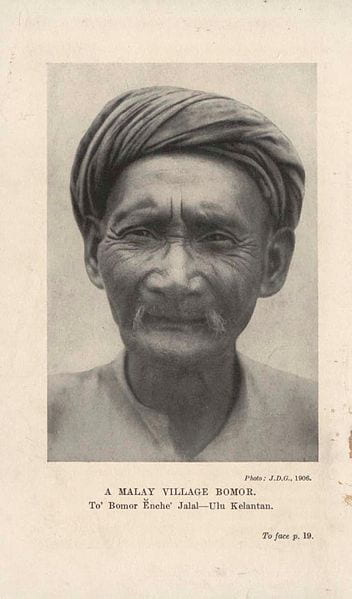By Poonam Lalwani
Did you know that traditional Malay medicine was highly dependent on indigenous knowledge of flora and fauna? Many remedies incorporate plant and animal components such as roots, leaves, fruits, chicken skin, and sheep milk. Traditional Malay medicinal practices have existed for centuries, however, it is impossible to trace both its beginnings and origin, as knowledge was typically kept within families, passed down through practice and oral traditions.

Both dried and fresh plant products are highly sought after by traditional healers. Pexel photo by Karolina Grabowska
A collection of books featuring publications from the Singapore-Malaysia Collection, highlighting how flora and fauna have been used by the Malay community in the region, was displayed over a three-month period at the Singapore-Malaysia Collection area at Central Library Level 5. The book display was an extension of a rare book exhibition, “Flora and Fauna in Malaya”. The selected titles aimed to challenge what we learnt from colonial literature with that of native knowledge.
Typically, practitioners who would use the Kitab Tibb (The Book of Medicine) to complement knowledge that was either inherited from the family or learnt from apprenticeship. The term is derived from the Arabic language, ‘kitab’ means ‘a book’ and ‘tibb’ means ‘physical and spiritual treatment or medical knowledge’. The manuscripts would typically include an introduction to the science of medicine, general tips for personal health care, types of diseases, a list of dietary restrictions and a variety of taboos the afflicted should observe.
Did you know that there are numerous versions of Kitab Tibb manuscripts housed in institutions all over the globe? For instance, the version on display was authored by Dr Harun Mat Piah, a well-known researcher on the subject. His book, Kitab Tib: MSS 1292 PNM delved into the original manuscript and gave insights into the secrets of traditional Malay healing practices which showed the wisdom of past generations. The book also features several photographs of the original manuscript. Whereas, the Kitāb zubdat al-ṭibb at the Library of Congress in Washington, D.C was authored by Isma’īl ibn Muhammad al-Husayn al-Jurjānī, a highly acclaimed physician of his time. Written in Arabic, it is a medical manual in synoptic chart format and is divided into two parts. While Leiden University Libraries version of the Kitab Tibb Or. 1714 is in Malay and published in Batavia, Indonesia.
In numerous colonial writings, scholars held diverse views of traditional Malay medicine. Malay Poisons and Charm Cures, a book in our Rare Book collection describes the various kinds of poisons and charms used in different situations by the Malays in the 20th century. Its author, John D. Gimlette, praised the Malay community’s knowledge and understanding of plants and herbs before highlighting the medicinal value of these untapped sources. However, others have scoffed at traditional Malay medicine, often treating them with suspicion and dismissing the healing practices as acts of magic and the supernatural. For example, Walter W. Skeat, an English anthropologist expressed reservations, attributing some health problems to the “bomors’ evil influence” in his book Malay magic: Being an introduction to the folklore and popular religion of the Malay Peninsula.

Image of a Kelantan village bomor, traditional Malay healer. Image source: Malay poisons and charm cures is in the public domain
Even though Western medical practices rose in prominence in British Malaya throughout the late 19th and 20th centuries, traditional medical practices still persisted and continued to be practised and accepted.
Titles that were on display:
Gimlette, John D. Malay Poisons and Charm Cures. London: J. & A. Churchill, 1929.
Piah, Harun M., Nik Musa’adah Mustapha, and Perpustakaan Negara Malaysia. Kitab Tib: MSS 1292 PNM. Selangor Darul Ehsan: Institut Penyelidikan Perhutanan Malaysia, 2019.
Samy, J., M. Sugumaran, Kate L. W. Lee, and K. M. Wong. 100 Useful Herbs of Malaysia and Singapore : An Introduction to Their Medicinal, Culinary, Aromatic and Cosmetic Uses. Singapore: Marshall Cavendish Editions, 2014.
Shafri, Mohd. Affendi Mohd., and Intan A. Shahdan. Malay Medical Manuscripts: Heritage from the Garden of Healing. Selangor: Akademi Jawi Malaysia, 2017.
Toeh, Eng Soon. “Medicinal Orchids in the Malay Archipelago.” In Orchids As Aphrodisiac, Medicine or Food, 255–89. Switzerland: Springer Nature Switzerland AG, 2019. https://doi.org/10.1007/978-3-030-18255-7_15.
Werner, Ronald. Bomoh Poyang: Traditional Medicine and Ceremonial Art of the Aborigines of Malaysia. Kuala Lumpur: Department of Publications, University of Malaya, 1986.
Yahya, Farouk. Magic and Divination in Malay Illustrated Manuscripts. Leiden, Netherlands: Brill, 2016.
Zakaria, Muhamad b., and Mustafa A. Mohd. Traditional Malay Medicinal Plants. Kuala Lumpur: Pernerbit Fajar Bakti Sdn. Bhd., 1994.
